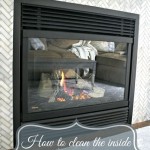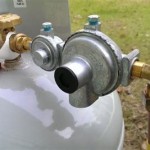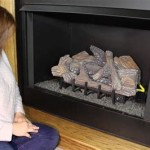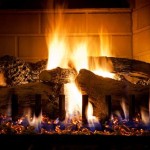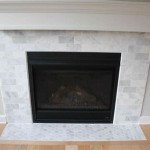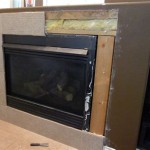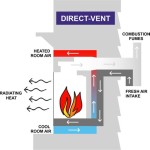Fireplace Grates With Blowers: Enhancing Fireplace Efficiency and Heat Output
Fireplace grates with blowers represent a significant advancement in fireplace technology, offering a practical solution for homeowners seeking to improve the heating efficiency of their existing fireplaces. Traditional fireplaces, while aesthetically pleasing, are notoriously inefficient when it comes to heat distribution. A substantial portion of the heat generated escapes through the chimney, resulting in minimal warmth reaching the living space. Fireplace grates with blowers address this issue by actively circulating heated air, maximizing heat output and contributing to a more comfortable and energy-efficient home.
These grates are designed to hold firewood while also housing a built-in blower system. The blower, typically powered by electricity, draws in cool air from the surrounding room, passes it through the heated area around the fire, and then forces the warmed air back into the room. This forced-air circulation significantly reduces heat loss up the chimney and promotes a more even distribution of warmth throughout the space.
The effectiveness of a fireplace grate with a blower depends on several factors, including the size of the fireplace, the quality of the grate and blower, and the type of wood being burned. Understanding these factors is crucial for homeowners considering investing in this technology. This article will delve into the key aspects of fireplace grates with blowers, exploring their features, benefits, selection criteria, and maintenance requirements.
Understanding the Mechanics of Fireplace Grates with Blowers
The core functionality of a fireplace grate with a blower revolves around its ability to enhance convective heat transfer. Convection, the process by which heat is transferred through the movement of fluids (in this case, air), is naturally occurring around a fireplace. However, without assistance, this process is limited, leading to stratification of warm air near the ceiling and cooler temperatures at floor level.
Fireplace grates with blowers actively augment this convective process. The blower unit, usually situated beneath or behind the grate, pulls cool air from the room, typically near the floor. This air is then channeled through a series of tubes or ducts within the grate, positioned close to the burning wood. As the air passes through these heated channels, it absorbs thermal energy from the firebox.
The now-heated air is then expelled back into the room, often through vents located on the front or sides of the grate. This forced-air circulation disrupts the natural stratification, pushing warm air down towards the floor and mixing it with the cooler air. This results in a more uniform temperature distribution throughout the room and a noticeable increase in overall warmth felt by occupants.
The effectiveness of this process is directly related to the blower's airflow capacity, measured in cubic feet per minute (CFM). A higher CFM rating indicates a greater volume of air being circulated, leading to more rapid and efficient heat distribution. However, a blower with too high a CFM can also create excessive noise. Therefore, selecting a blower with an appropriate CFM rating for the size of the fireplace and the room is crucial.
Benefits of Using Fireplace Grates with Blowers
The primary benefit of using a fireplace grate with a blower is the substantial improvement in heating efficiency. Traditional fireplaces can have efficiency ratings as low as 10-20%, meaning that a significant portion of the heat generated is lost up the chimney. Fireplace grates with blowers can increase this efficiency to 40-50% or even higher, depending on the model and installation.
This improved efficiency translates to several tangible advantages for homeowners. Firstly, it reduces the amount of wood required to maintain a comfortable temperature, leading to cost savings on firewood purchases. Secondly, it contributes to a more consistent and comfortable room temperature, eliminating cold spots and minimizing temperature fluctuations. Finally, by maximizing the heat output from the fireplace, homeowners may be able to reduce their reliance on other heating systems, such as furnaces or electric heaters, further lowering energy consumption and costs.
Beyond improved efficiency, fireplace grates with blowers also offer enhanced safety. By promoting more complete combustion of the wood, they can reduce the buildup of creosote in the chimney, a highly flammable substance that can lead to chimney fires. Furthermore, the forced-air circulation helps to prevent the build-up of smoke and carbon monoxide in the room, creating a safer and healthier indoor environment.
Another advantage is the ease of installation and use. Most fireplace grates with blowers are designed to be easily installed in existing fireplaces without requiring any significant modifications. They are typically plug-and-play devices, with a simple on/off switch or adjustable thermostat for controlling the blower speed. This makes them a convenient and user-friendly option for homeowners looking to improve the performance of their fireplaces.
Selecting the Right Fireplace Grate with Blower
Choosing the appropriate fireplace grate with a blower requires careful consideration of several factors. One of the most important considerations is the size of the fireplace. The grate should be sized to fit comfortably within the firebox, allowing for adequate airflow around the burning wood. A grate that is too large can restrict airflow and hinder combustion, while a grate that is too small may not provide sufficient heating capacity.
Another crucial factor is the blower's CFM rating. As mentioned earlier, the CFM rating should be appropriate for the size of the fireplace and the room being heated. A general guideline is to choose a blower with a CFM rating that is approximately equal to the cubic footage of the room. However, this is just a starting point, and it may be necessary to adjust the CFM rating based on the specific characteristics of the fireplace and the room.
The quality of the grate and blower is also an important consideration. Look for grates made from durable materials, such as heavy-duty steel or cast iron, that can withstand the high temperatures of a fireplace. The blower should be well-constructed and designed for quiet operation. It is also advisable to choose a blower with a thermal overload protection feature, which will automatically shut off the blower if it overheats, preventing damage to the unit.
Finally, consider the features and options offered by different models. Some grates come with adjustable thermostats, which allow you to automatically regulate the blower speed based on the temperature of the fire. Others may have multiple blower speeds, providing greater control over the airflow. Some models also feature decorative elements, such as brass or chrome accents, that can enhance the aesthetic appeal of the fireplace.
When selecting a fireplace grate with a blower, it is also prudent to research reputable brands and read customer reviews. This can provide valuable insights into the performance, reliability, and durability of different models. Consulting with a fireplace professional can also be helpful in determining the best option for your specific needs and budget.
Maintenance and Safety Considerations
Proper maintenance is essential for ensuring the longevity and safe operation of a fireplace grate with a blower. Regular cleaning of the grate and blower is necessary to remove ash, soot, and other debris that can accumulate over time. This can be done using a brush, vacuum cleaner, or compressed air.
It is also important to inspect the blower regularly for any signs of damage or wear. Check the fan blades for cracks or bends, and ensure that the motor is running smoothly and quietly. If you notice any problems, it is best to consult with a qualified technician for repair or replacement.
Safety is paramount when using a fireplace grate with a blower. Always follow the manufacturer's instructions for installation and operation. Ensure that the grate is properly positioned within the firebox and that the blower is securely plugged into a grounded electrical outlet. Never leave a burning fire unattended, and always have a working smoke detector and carbon monoxide detector in the room.
Furthermore, be mindful of the placement of combustible materials near the fireplace. Keep flammable items, such as curtains, furniture, and paper, at least three feet away from the fireplace opening. It is also advisable to use a fire screen to prevent sparks from escaping and potentially igniting nearby materials.
Regular chimney cleaning is also crucial for maintaining a safe and efficient fireplace. Creosote buildup can significantly reduce the draft of the chimney and increase the risk of a chimney fire. It is recommended to have your chimney inspected and cleaned annually by a qualified chimney sweep.
Types of Fireplace Grates with Blowers
Fireplace grates with blowers are available in various designs and configurations, each offering unique features and benefits. Understanding the different types can help homeowners choose the best option for their specific needs and preferences.
One common type is the tube grate with blower. These grates feature a series of steel tubes that run horizontally across the firebox. The blower is typically located beneath or behind the grate, and it forces air through the tubes, which act as heat exchangers. Tube grates are known for their efficient heat transfer and relatively quiet operation.
Another type is the cast iron grate with blower. Cast iron grates are renowned for their durability and ability to retain heat for extended periods. The blower is usually integrated into the base of the grate, and it circulates air through the cast iron, radiating heat into the room. Cast iron grates are often more expensive than tube grates, but they can provide superior heating performance and longevity.
There are also specialized grates designed for specific types of fireplaces, such as zero-clearance fireplaces and masonry fireplaces. These grates may have unique dimensions or features that are tailored to the specific requirements of these fireplace types.
In addition to the type of grate, the blower system itself can also vary. Some blowers are single-speed, while others offer multiple speed settings. Some blowers may also have features such as automatic temperature control or remote control operation.

Grate Heater Wikipedia
Fireplace Heater 5 Tube W Blower

Tube Fireplace Grate Heater For Zc Fireplaces

5 Tube Grate Heater Wood Burning Fireplaces

5 Tube Fireplace Grate Heater For Zero Clearance Fireplaces

Masonry Fireplace Grate Heater With 10 Tubes

5 Tube Grate Heater Wood Burning Fireplaces

Warming Vortex Fireplace Blower Grate Heater 2220

Grate Heater With Masonry Fireplace Doors Customized

Spitfire Tube Fireplace Heaters Heater Blower Heating And Plumbing
Related Posts

